NEXT, THE NEWS:
WOMAN SAYS PLANNED PARENTHOOD DOCTOR RECOMMENDED TRANSGENDER SURGERY WITHOUT MEETING HER
from: LiveAction News
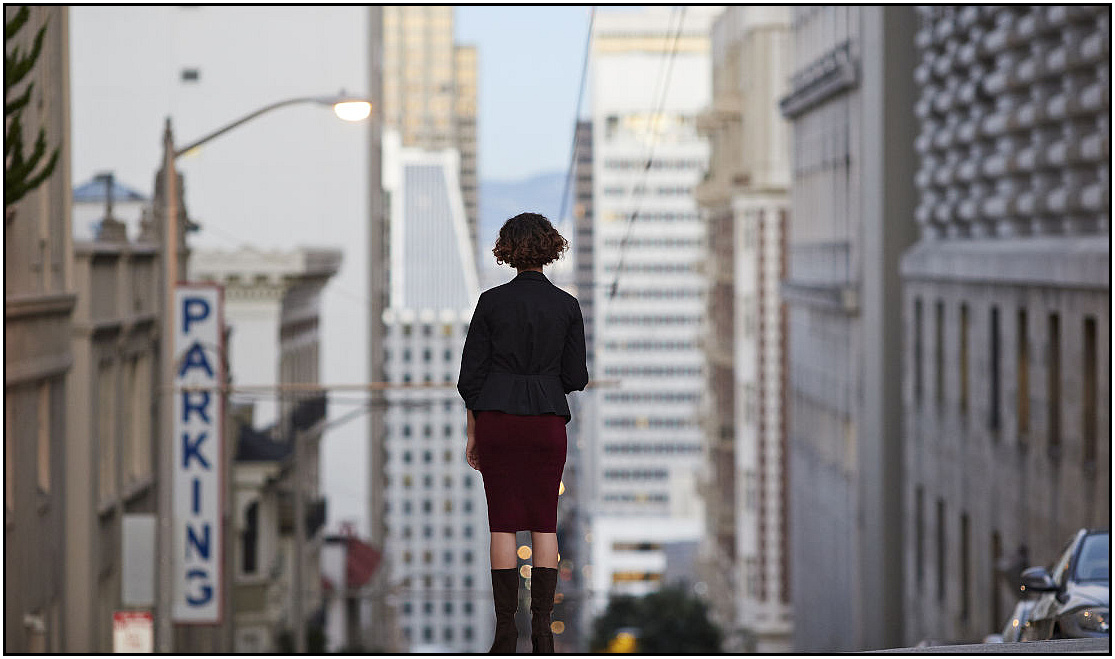 (15 May) Planned Parenthood clients claim that the organization, a top provider of "gender affirming care," does little to no counseling before prescribing cross-sex hormones or referring clients for permanent, body-altering surgery.
(15 May) Planned Parenthood clients claim that the organization, a top provider of "gender affirming care," does little to no counseling before prescribing cross-sex hormones or referring clients for permanent, body-altering surgery.
Hormone injections with no counseling
All it took to for Helena – born a biological female – to get a testosterone prescription was "one trip to Planned Parenthood when she was 18," the New York Post wrote, adding, "She said she was given four times the typical starting dose by a nurse practitioner in less than an hour, without ever seeing a doctor."
The Post claimed that Helena "said she felt political pressure to transition."
"The community was very social justice-y. There was a lot of negativity around being a cis, heterosexual, white girl, and I took those messages really, really personally," Helena told the Post.
Helena was not alone.
Someone named Ryan also claimed to have received no counseling from Planned Parenthood to obtain a cross-sex hormone prescription. "I went to Planned Parenthood… I basically walked in – I said 'Hi. I think I'm trans,'" Ryan said in the TikTok video published by @transition_justice. "They said, 'great, we're gonna diagnose you with gender dysphoria and here's your prescription for testosterone. You can get it the very next day,'" Ryan added. "And I said, 'great.' I didn't actually realize in my head what a huge f****ing red flag this was."
Planned Parenthood allegedly referred for 'top surgery' without meeting client
In an interview on Dr. Phil's show, Ryan told Dr. Phil that Planned Parenthood also referred her for so-called 'top surgery' – meaning one in which her healthy female breasts would be surgically removed. According to a report published by the Post-Millennial, "Planned Parenthood also gave her a letter to facilitate surgical breast removal, known in the gender identity movement as 'top surgery,' after only a 45-minute phone call." [read more...]
COMMENTARY: Please read the whole article: it contains several more examples of young people being put on the transgender treadmill without any proper medical diagnosis by a trained medical doctor or psychologist. Some states have now passed laws defining sex change surgery on minors as "child abuse" and prosecuting those doctors who perform these surgeries that mutlate perfectly healthy organs for the sake of a twisted ideology.
U.S. SURGEON-GENERAL SAYS THAT AMERICA HAS A LONELINESS EPIDEMIC
from: BioEdge.org
 (9 May) In addition to smoking, type 2 diabetes, obesity, opioids, and alcoholism, the U.S. Surgeon-General, Dr. Vivek Murthy, has identified another epidemic of lifestyle disease which is "an urgent public health concern" – loneliness.
(9 May) In addition to smoking, type 2 diabetes, obesity, opioids, and alcoholism, the U.S. Surgeon-General, Dr. Vivek Murthy, has identified another epidemic of lifestyle disease which is "an urgent public health concern" – loneliness.
His department has identified "social connection" as a top priority and has just published an 82-page report, "Our Epidemic of Loneliness and Isolation" outlining the problem.
In an op-ed in the New York Times, Dr Murthy recalls his own struggle with loneliness after he was fired by President Trump in 2017. He describes the feeling in dramatic terms. "Loneliness – like depression, with which it can be associated – can chip away at your self-esteem and erode your sense of who you are. That's what happened to me."
Dr Murthy outlines the calamitous consequences of a lonely society:
"Loneliness is more than just a bad feeling. When people are socially disconnected, their risk of anxiety and depression increases. So does their risk of heart disease (29 percent), dementia (50 percent), and stroke (32 percent). The increased risk of premature death associated with social disconnection is comparable to smoking daily – and may be even greater than the risk associated with obesity."
He goes on to say:
"As it has built for decades, the epidemic of loneliness and isolation has fueled other problems that are killing us and threaten to rip our country apart. Given these extraordinary costs, rebuilding social connection must be a top public health priority for our nation. It will require reorienting ourselves, our communities, and our institutions to prioritize human connection and healthy relationships."
His strategy for combatting social isolation is three-fold:
* Strengthening social infrastructure – teaching workplaces, children and communities the importance of relationships.
* Controlling technology so that we pay more attention to each other.
* Rebuilding personal connections.
He concludes: "Addressing the crisis of loneliness and isolation is one of our generation's greatest challenges. … our need for human connection is like our need for food and water: essential for our survival." [read more...]
COMMENTARY: Nursing homes are places where a frequent cause of death listed on death certificates is "loneliness" – health care may be adequate, but social interaction is almost totally lacking. Loneliness is especially prevalent among people who are disabled and/or elderly, who are left alone in their homes and have difficulty getting out to mix with other people, leading some to request assisted suicide. According to the Bioedge article Spanish governments lock horns over euthanasia for the disabled, Spain is experiencing conflict between Madrid city's conservative government and "the central government by the left-wing parties which pushed through the euthanasia legislation." We need to build accessible housing where the disabled and/or elderly can "age in place" and enjoy the company of others including able-bodied children and adults: this is a matter of life and death!
20 DESIGN TIPS FOR A WHEELCHAIR-ACCESSIBLE HOME
from: HGTV
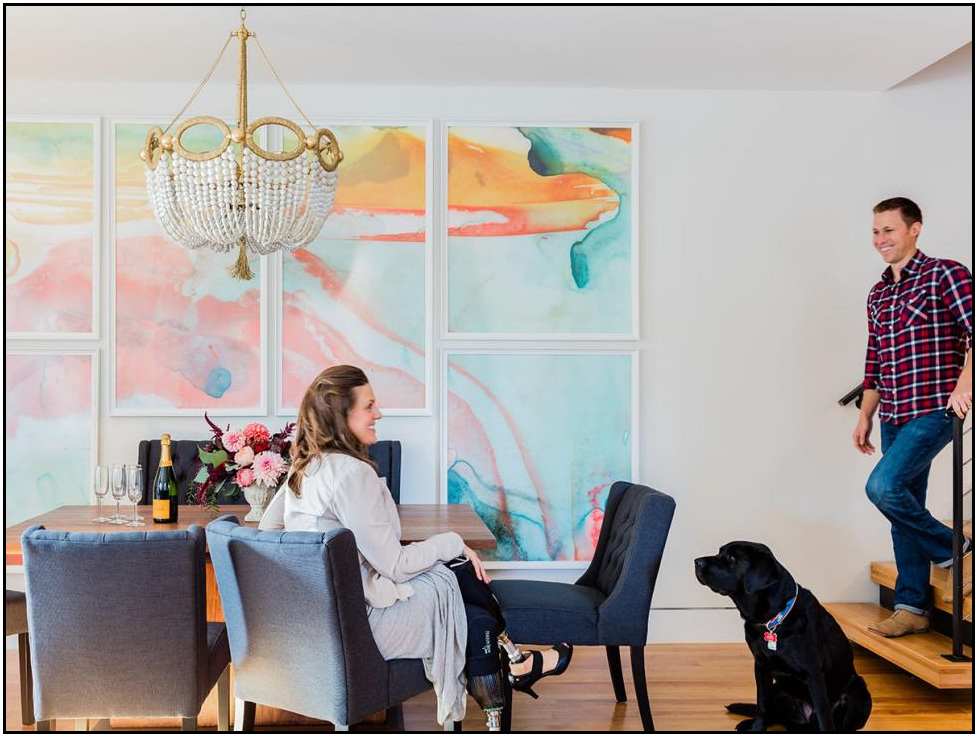 (19 May, 2020) Universal home design (also known as inclusive architecture or accessible design) is a principle that benefits people with varying needs and levels of mobility, from the differently-abled to those aging in place. If you're building or remodeling with accessibility in mind, get started with our thoughtful design ideas.
(19 May, 2020) Universal home design (also known as inclusive architecture or accessible design) is a principle that benefits people with varying needs and levels of mobility, from the differently-abled to those aging in place. If you're building or remodeling with accessibility in mind, get started with our thoughtful design ideas.
Approximately 26% of Americans live with a disability, a majority requiring the use of a wheelchair or other mobility device. As the population ages, that number is on the rise. The ADA (Americans With Disabilities Act) attempts to ensure that persons with disabilities have equal access to – and convenience in – public spaces via a range of codes and recommendations.
Unfortunately, many private homes lack basic accessibility features. While no two people have the same set of needs, many universal design features can be added to an existing home or included in building plans to allow those with varying levels of mobility to live as independently and safely as possible without sacrificing style.
There's a new word in the vocabulary of builders and remodelers: visitability. This word denotes a concept that significantly differs from the whole-home design principles that have been variously labeled accessible housing, universal design or adaptable housing. These more familiar terms are used for homes whose owners require extensively modified floor plans and product features.
Visitability, on the other hand, is a movement to change construction practices so that virtually all new homes offer specific features that make the home easier for people with mobility impairment to visit—or to live in. The short list includes providing a zero-step entrance to the home, three-foot-wide passage doors within the home, and a bath or powder room on the main floor that is accessible to someone in a wheelchair.
These three features are designed to also appeal to people who do not currently have mobility impairments. The step-free entrance provides a safe entry for people with their arms full of shopping bags or small children. This type of entrance also allows for easy transport of luggage carriers, strollers and other cumbersome objects. Wider doorways allow people to pass freely around the main floor even when carrying bulky items such as laundry baskets. And the main-floor bath with a 60-inch clear space for a wheelchair also makes the room more spacious for everyone. [read more...]
COMMENTARY: The above website has four more sections and several links to more info on accessible housing. This is a subject that is finally coming of age!
'THE NEED IS MASSIVE' | DOCTOR TAKES HEALTHCARE INTO THE HOMES OF THE MOST VULNERABLE
from: WUSA9 TV
 (3 Apr.) WATCH THE VIDEO! When the coronavirus put a strain on health systems in cities, like New York and Washington DC, providers created "hospital-at-home," programs for patients with acute illnesses, but no need to be hospitalized.
(3 Apr.) WATCH THE VIDEO! When the coronavirus put a strain on health systems in cities, like New York and Washington DC, providers created "hospital-at-home," programs for patients with acute illnesses, but no need to be hospitalized.
But, this in-home healthcare is nothing new at Medstar Washington Hospital Center. The local facility's nationally recognized program has been making house calls long before the pandemic hit for more than 20 years.
Dr. Eric De Jonge wakes up each day to make an impact. It starts in office 213 in the Northwest DC hospital center. "I come in and I kind of get prepared. I get to look at my schedule and see what patients I'm going to see. I take notes, and map out my route," said Dr. De Jonge.
He makes sure his military bag is stocked with supplies, "devices to do wound care, ear and eye exam, gloves, gauze, thermometer," said the doctor, and has what he needs to make his rounds.
"Hi Mrs. Wood, how are you?" the doctor asked. You see, De Jonge doesn't make his rounds in the hospital. He drives hundreds of miles a year, to make his rounds in his patients' homes. Dr. Eric De Jonge co-founded the House Call Program at Medstar Washington Hospital Center more than two decades ago.
"The need was massive, you know, there's a huge number of patients in Medicare and in the District of Columbia who are very ill, homebound, have trouble getting to the doctor and land in the emergency room or hospital unnecessarily," the doctor said.
It was a way for him and his 15-member team of doctors, social workers, coordinators, managers and nurse practitioners to deliver healthcare to a very vulnerable and needy geriatric population. "It's so much better to go their houses, see how they live, what they actually eat, where their medications are, and spend more time with them," said Nurse Practitioner Michelle Sullivan. [read more...]
COMMENTARY: It's refreshing to see doctors returning to the old-time custom of making house-calls. Making rounds in hospital is more efficient and medical systems can make more money that way, but it doesn't take into consideration the strain it puts on people with disabilities who can only make it to the hospital with great difficulty or the expense of taking an ambulance... or not at all. They feel a lack of self-worth and abandonment because able-bodied people often don't give a thought to their isolation.
METR. OF CRIMEA AND SIMFEROPOL KLYMENT CALLS RUSSIAN SEIZING THE OCU CHURCH IN CRIMEA AN "ACT OF ETHNOCIDE"
from: Religious Information Service of Ukraine
 (14 May) Metropolitan Klyment of the Orthodox Church of Ukraine in Crimea and Simferopol has referred to the seizure of the cathedral of the Orthodox Church of Ukraine in Simferopol by Russian forces as an "act of ethnocide."
He has called on the Ukrainian government, international partners, and the diplomatic corps to provide an appropriate assessment of the situation, as reported by Krym.Realii.
(14 May) Metropolitan Klyment of the Orthodox Church of Ukraine in Crimea and Simferopol has referred to the seizure of the cathedral of the Orthodox Church of Ukraine in Simferopol by Russian forces as an "act of ethnocide."
He has called on the Ukrainian government, international partners, and the diplomatic corps to provide an appropriate assessment of the situation, as reported by Krym.Realii.
"This is the only Orthodox church that, during the nine years of Russian occupation of the peninsula, served as the main center of Ukrainian identity in Crimea. It is not only a religious but also a cultural object... We need protection and special attention to this situation. The main task now is to preserve at least the relics, holy relics, icons, and sacred objects that remain there. I urge the Ukrainian authorities to give an appropriate assessment," Klyment said, quoted by the Ukrainian Crisis Media Center website.
Eliminating the Orthodox Church of Ukraine's physical presence means destroying Ukrainian culture and nationality in Crimea. Earlier, the State Service of Ukraine for Ethnic Policy and Freedom of Conscience commented on the seizure of the cathedral of the Orthodox Church of Ukraine in Simferopol by Russian forces:
"On May 11, 2023, Russian occupiers began looting the Cathedral of St. Volodymyr and Olga, the cathedral of the Orthodox Church of Ukraine in Simferopol. It is already known that they are breaking down doors and confiscating church property. This is another action aimed at suppressing freedom of conscience, carried out by the Russian Federation," the statement said.
In turn, the Russian authorities in Crimea intend to transfer the cathedral of St. Volodymyr and Olga, belonging to the Orthodox Church of Ukraine in Simferopol to the Russian Orthodox Church on terms of "free use."
The Russian Ministry of Property and Land Relations of Crimea stated that the release of the cathedral of the Orthodox Church of Ukraine in Simferopol is taking place "on legal grounds." [read more...]
COMMENTARY: I am appalled and heartbroken by these atrocities Russia is inflicting upon Ukraine! Russia isn't only committing genocide by killing tens of thousands of innocent civilians in hospitals, schools, and homes; Russia is also committing ethnocide by destroying Ukraine's cultural identity as a separate nationality. Russia claims that Ukraine is and has always been part of Russia, which is a lie: just the opposite is true – the fact is that Ukraine is the place where slavic Orthodox culture originated. Russia's current plundering of Ukraine is like greedy children robbing and murdering their parents, only on a much larger scale of evil.
WHY BUSES CANNOT GET WHEELCHAIR USERS TO MOST CITY AREAS
from: Disabled World
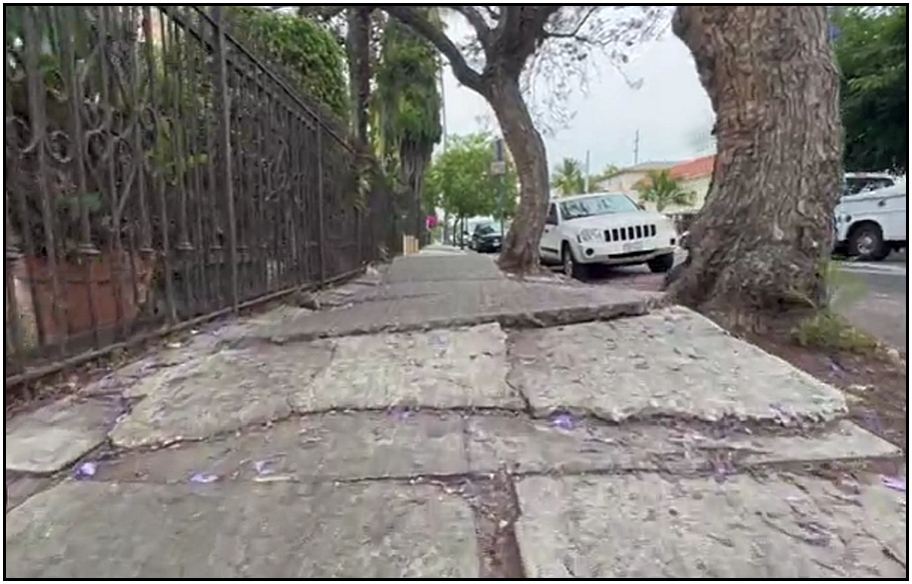 (10 May) A study in Columbus, Ohio finds lack of sidewalks hampers mobility. While many buses now are wheelchair-accessible, many streets nowadays have no sidewalks at all, or sidewalks with no curb cuts, or sidewalks in bad repair. All these factors can make it impossible for wheelchair users to take the bus anywhere.
(10 May) A study in Columbus, Ohio finds lack of sidewalks hampers mobility. While many buses now are wheelchair-accessible, many streets nowadays have no sidewalks at all, or sidewalks with no curb cuts, or sidewalks in bad repair. All these factors can make it impossible for wheelchair users to take the bus anywhere.
Imagine you could travel to only 1% of the city where you live – areas that were easily accessible to other residents. That's the situation for manual wheelchair users traveling by public buses in Columbus, a first-of-its-kind study finds. The situation for those with powered wheelchairs is only somewhat better – the study found they have access to about 25% of the areas available to the general bus ridership.
But the main problem isn't with the bus system itself – the key obstacle is with the sidewalks and other infrastructure that wheelchair users need to get from their homes to bus stops and from bus stops to their final destinations, researchers found.
"Damaged and missing sidewalks are a huge factor in making much of the city inaccessible to wheelchair users who rely on public transportation to get around," said Luyu Liu, lead author of the study and a doctoral student in geography at Ohio State University. "People with mobility disabilities need to get to and from bus stops in order to use public transportation and that isn't easy in many parts of the city."
The study, published recently in the Journal of Transport Geography, is significant because it is one of the first studies to obtain high-resolution, real-time data on the usage of buses by people with and without disabilities and compare it with data on infrastructure such as sidewalks.
"We've never been able to do an analysis like this before. The data simply did not exist until recently," said study co-author Harvey Miller, professor of geography at Ohio State and director of the university's Center for Urban and Regional Analysis. "It allows us to get new insights into how public transportation operates in our cities and the social equity challenges we are facing." [read more...]
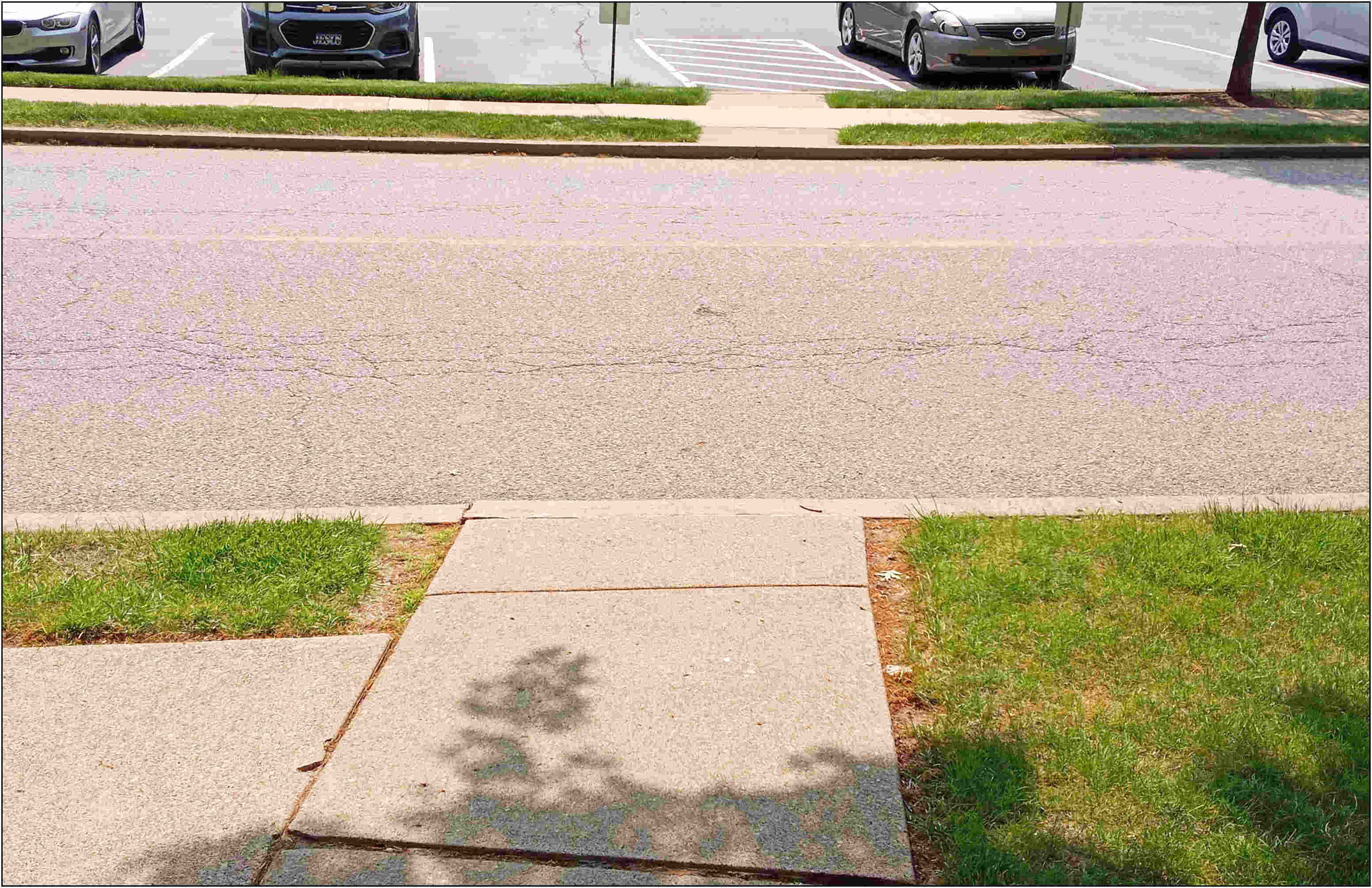 COMMENTARY: Most of our condo-townhouse community's sidewalks feature curb cuts – that's nice but planning only halfway for a community built 45 years ago: the sidewalk along the street in front of our building ends abruptly at the sidewalk coming from our building, with no curb cuts to cross the street. Only about 5% of our condos and zero% of our townhouses are wheelchair-accessible: most of the condos have 1/2 to 1 and 1/2 flights of stairs to enter one's home, and all of the townhouses have 2 or 3 flights of stairs. So Columbus OH is fairly typical of most cities in the U.S. The lack of just one curb cut or one broken sidewalk can make a person with mobility issues completely isolated and unable to get around.
COMMENTARY: Most of our condo-townhouse community's sidewalks feature curb cuts – that's nice but planning only halfway for a community built 45 years ago: the sidewalk along the street in front of our building ends abruptly at the sidewalk coming from our building, with no curb cuts to cross the street. Only about 5% of our condos and zero% of our townhouses are wheelchair-accessible: most of the condos have 1/2 to 1 and 1/2 flights of stairs to enter one's home, and all of the townhouses have 2 or 3 flights of stairs. So Columbus OH is fairly typical of most cities in the U.S. The lack of just one curb cut or one broken sidewalk can make a person with mobility issues completely isolated and unable to get around.
NOW, OUR VIEWS:
PEOPLE DON'T CARE HOW MUCH YOU KNOW...
UNTIL THEY KNOW HOW MUCH YOU CARE!
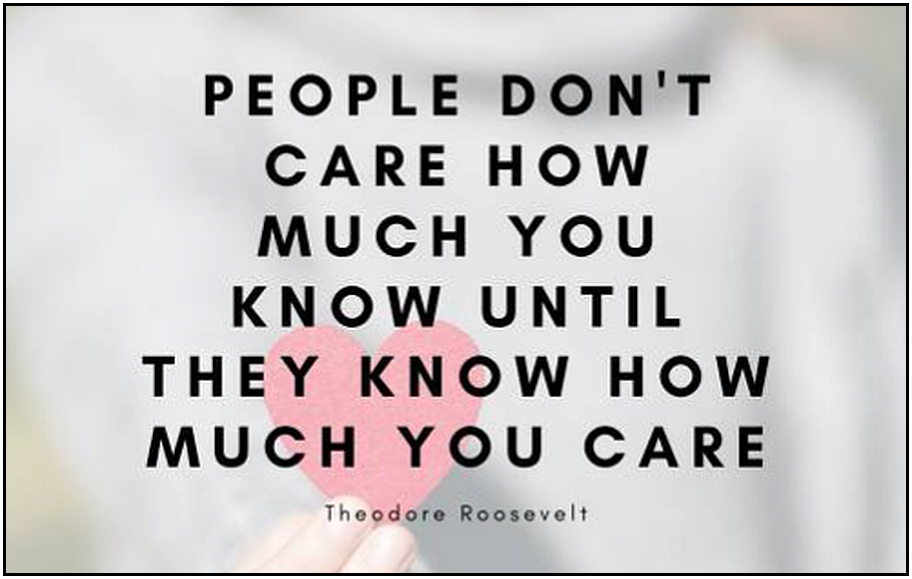 "The Medium is the Message" – an expression made famous by Marshall McLuhan – revolves around the idea of the form that a message is in is the most important part of the message rather than its actual written message. Cramped or sloppy formatting, clumsy wording, or clashing colors can all nullify the message you want to communicate.
"The Medium is the Message" – an expression made famous by Marshall McLuhan – revolves around the idea of the form that a message is in is the most important part of the message rather than its actual written message. Cramped or sloppy formatting, clumsy wording, or clashing colors can all nullify the message you want to communicate.
So it is with the Gospel: if the preacher is shouting and yelling in a harsh tone, it's hardly Good News to hear. In contrast, the Lord Jesus is "God's love with skin on" – God in the flesh, Who ministered to "the lame, blind, mute, and maimed" (Mat. 15:30). Our job as followers of Jesus the Messiah is to figure out how to put skin on the Gospel message of God's love, to show how much we care, not just how much we know.
Many think that when someone becomes disabled, that person just goes from the hospital to a nursing home, but there's a much wider spectrum of care. Several kinds of caring facilities exist: home care, respite care for family caregivers, independent living, assisted living, nursing homes, rehab facilities, and hospice care. And several aspects of care exist:
* Hiring a senior caregiver on your own can be cheaper than using an agency – save the overhead of paying an agency's fees
* 9 Caregiver Support Groups that Help Caregivers in Need – CaringBridge: caring for the caregivers
* 2023 Guide to Home Care for Seniors... and Get Paid – search for assisted living and memory care for a loved one
* How To Earn Your Home Health Aide (HHA) Certification – become a certified Home Health Aide
* How Long Does It Take To Become a CNA? (With Other FAQs): short answer – 4 to 8 weeks, but there's more...
* How to Become a Certified Nursing Assistant – What Is a CNA and what do they do?
And we must not forget that "The Medium is the Message" – the type of a home's or a healthcare building's architecture greatly affects how and what kind of people can use it. Our son, an architect, included this phrase in his master's thesis: "We shape our buildings, and then they shape us" – a quote by Winston Churchill, who was not only a statesman but also an artist and amateur architect.
There are many ways to make homes and commercial buildings accessible for all, or inclusive – for both able-bodied and disabled people: see the article 20 DESIGN TIPS FOR A WHEELCHAIR ACCESSIBLE HOME. We need to rethink how both exterior and interior design, including sloped sidewalks or ramps into buildings for ground floor and second floor, elevators with at least 30-inch-wide doors, 36-inch-wide doorways without thresholds, door handles instead of doorknobs, electrical outlets 24 inches from floor, enough knee space under tables, sinks, and countertops for someone in a wheelchair, and much more!
These are just a few ways we can incarnate Christ's Good News – "God's love with skin on" – God in the flesh, in the Body of Christ!
A personal note: Buildings can be made "Net Zero" energy-efficient as well as accessible: here are several photos that our "green architect" son took to show how to and how not to leak lots of energy – see this slideshow: Infrared Thermography: Seeing Stunning, Significant Secrets. And click HERE if you'd like to print 6 of these photos on 1 sheet of paper.
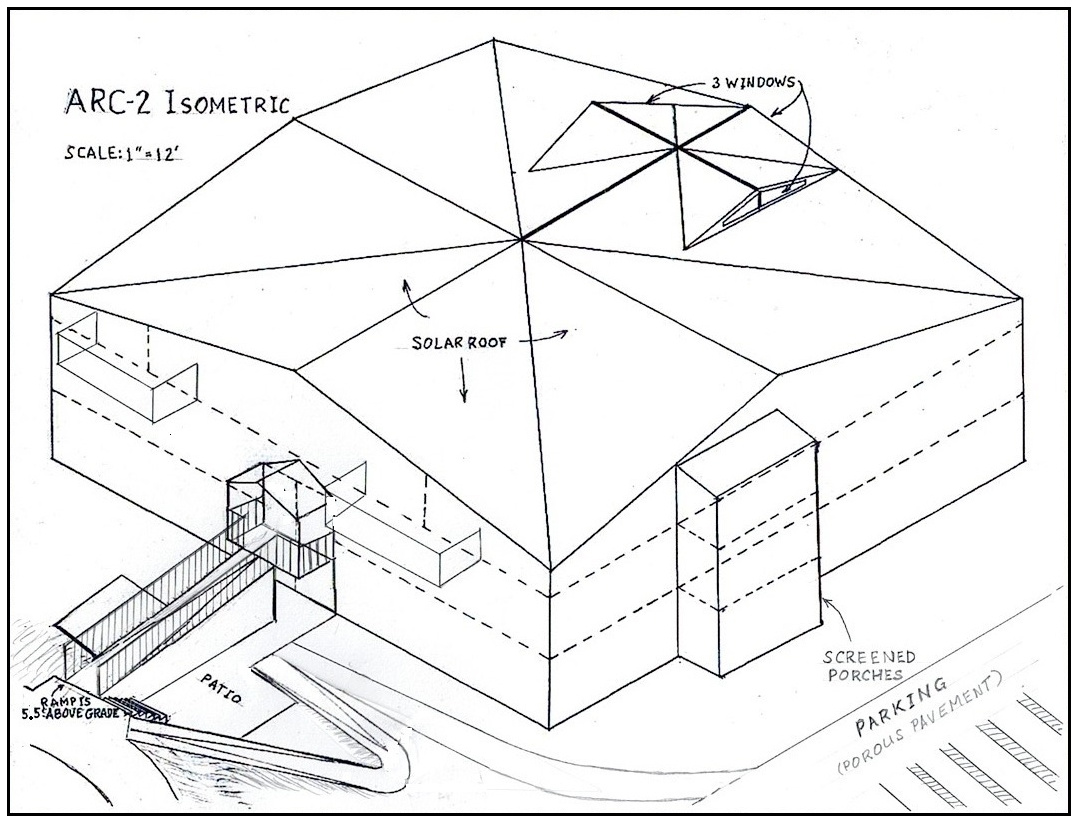 (← Click to see full-size!) You might ask – "Do I look like Noah? Why would I want to Build the ARC, anyway?" Here's why: my wife and I were missionaries to Russia for 17 years. Secular materialism has led to the de-Christianizing of the world: in its extreme form of communism, about 250,000 church buildings in Russia were destroyed or confiscated and turned into museums, breweries, factories or "Lenin Houses of Culture" during the Soviet era. Secularization worldwide continues to lead many people to become dependent on the state for answers to all their problems, diminishing the role of the church in society.
(← Click to see full-size!) You might ask – "Do I look like Noah? Why would I want to Build the ARC, anyway?" Here's why: my wife and I were missionaries to Russia for 17 years. Secular materialism has led to the de-Christianizing of the world: in its extreme form of communism, about 250,000 church buildings in Russia were destroyed or confiscated and turned into museums, breweries, factories or "Lenin Houses of Culture" during the Soviet era. Secularization worldwide continues to lead many people to become dependent on the state for answers to all their problems, diminishing the role of the church in society.

 (15 May) Planned Parenthood clients claim that the organization, a top provider of "gender affirming care," does little to no counseling before prescribing cross-sex hormones or referring clients for permanent, body-altering surgery.
(15 May) Planned Parenthood clients claim that the organization, a top provider of "gender affirming care," does little to no counseling before prescribing cross-sex hormones or referring clients for permanent, body-altering surgery. (9 May) In addition to smoking, type 2 diabetes, obesity, opioids, and alcoholism, the U.S. Surgeon-General, Dr. Vivek Murthy, has identified another epidemic of lifestyle disease which is "an urgent public health concern" – loneliness.
(9 May) In addition to smoking, type 2 diabetes, obesity, opioids, and alcoholism, the U.S. Surgeon-General, Dr. Vivek Murthy, has identified another epidemic of lifestyle disease which is "an urgent public health concern" – loneliness. (19 May, 2020) Universal home design (also known as inclusive architecture or accessible design) is a principle that benefits people with varying needs and levels of mobility, from the differently-abled to those aging in place. If you're building or remodeling with accessibility in mind, get started with our thoughtful design ideas.
(19 May, 2020) Universal home design (also known as inclusive architecture or accessible design) is a principle that benefits people with varying needs and levels of mobility, from the differently-abled to those aging in place. If you're building or remodeling with accessibility in mind, get started with our thoughtful design ideas. (3 Apr.) WATCH THE VIDEO! When the coronavirus put a strain on health systems in cities, like New York and Washington DC, providers created "hospital-at-home," programs for patients with acute illnesses, but no need to be hospitalized.
(3 Apr.) WATCH THE VIDEO! When the coronavirus put a strain on health systems in cities, like New York and Washington DC, providers created "hospital-at-home," programs for patients with acute illnesses, but no need to be hospitalized. (14 May) Metropolitan Klyment of the Orthodox Church of Ukraine in Crimea and Simferopol has referred to the seizure of the cathedral of the Orthodox Church of Ukraine in Simferopol by Russian forces as an "act of ethnocide."
He has called on the Ukrainian government, international partners, and the diplomatic corps to provide an appropriate assessment of the situation, as reported by Krym.Realii.
(14 May) Metropolitan Klyment of the Orthodox Church of Ukraine in Crimea and Simferopol has referred to the seizure of the cathedral of the Orthodox Church of Ukraine in Simferopol by Russian forces as an "act of ethnocide."
He has called on the Ukrainian government, international partners, and the diplomatic corps to provide an appropriate assessment of the situation, as reported by Krym.Realii. (10 May) A study in Columbus, Ohio finds lack of sidewalks hampers mobility. While many buses now are wheelchair-accessible, many streets nowadays have no sidewalks at all, or sidewalks with no curb cuts, or sidewalks in bad repair. All these factors can make it impossible for wheelchair users to take the bus anywhere.
(10 May) A study in Columbus, Ohio finds lack of sidewalks hampers mobility. While many buses now are wheelchair-accessible, many streets nowadays have no sidewalks at all, or sidewalks with no curb cuts, or sidewalks in bad repair. All these factors can make it impossible for wheelchair users to take the bus anywhere. COMMENTARY: Most of our condo-townhouse community's sidewalks feature curb cuts – that's nice but planning only halfway for a community built 45 years ago: the sidewalk along the street in front of our building ends abruptly at the sidewalk coming from our building, with no curb cuts to cross the street. Only about 5% of our condos and zero% of our townhouses are wheelchair-accessible: most of the condos have 1/2 to 1 and 1/2 flights of stairs to enter one's home, and all of the townhouses have 2 or 3 flights of stairs. So Columbus OH is fairly typical of most cities in the U.S. The lack of just one curb cut or one broken sidewalk can make a person with mobility issues completely isolated and unable to get around.
COMMENTARY: Most of our condo-townhouse community's sidewalks feature curb cuts – that's nice but planning only halfway for a community built 45 years ago: the sidewalk along the street in front of our building ends abruptly at the sidewalk coming from our building, with no curb cuts to cross the street. Only about 5% of our condos and zero% of our townhouses are wheelchair-accessible: most of the condos have 1/2 to 1 and 1/2 flights of stairs to enter one's home, and all of the townhouses have 2 or 3 flights of stairs. So Columbus OH is fairly typical of most cities in the U.S. The lack of just one curb cut or one broken sidewalk can make a person with mobility issues completely isolated and unable to get around.
